Despite bewailing the fact in a recent blog entry that I had not had enough time to do any
wargaming recently, circumstances provided me with an opportunity to do some far quicker that I had thought possible. I had expected to have to drive over to
Herne Bay to see my father-in-law this evening, but he had already gone out and so the evening was relatively free (no pun intended!).
I therefore took the opportunity to give my portable
wargame another short tryout, and what follows is a battle report that describes what happened.
Starting Positions Turn 1
Turn 1As only the British had an Artillery Unit, it fired before any movement took place. They aimed at the
Mahdist Infantry Unit that was directly in front of them, threw a 4 on a D6 die, and hit the grid square in front of the target grid
square.

Both sides then threw a D6 die to see who would move and fight first this turn. The British threw a 1 and the
Mahdists threw a 2; the
Mahdists were therefore able to move and fire first. The
Mahdists then threw three ‘Risk Express’ dice to see how many Units they could move.

The results were pretty useless as the
Mahdists had no Cavalry or Artillery, and the
Mahdist Command Unit moved forward one square.
The British then threw their three ‘Risk Express’ dice and their results were hardly much better as they were only able to move their Artillery and Command Units and one of their Infantry Units.

 Turn 2
Turn 2The British Artillery Unit fired at the same target for a second time. This time they threw a 3 on a D6 die, which meant that their fire had landed in the grid square to the right of the target grid square. A second D6 die score of 4 meant that the
Mahdist Infantry unit in that grid square was destroyed.

Both sides then threw a D6 die to see who would move and fight first this turn. The British threw a 2 and the
Mahdists threw a 3; the
Mahdists were therefore able to move and fire first. The
Mahdists then threw three ‘Risk Express’ dice to see how many Units they could move. The results were much better this time ...

... and five
Mahdist Infantry Units surged forward towards the British.

The British then threw their three ‘Risk Express’ dice and their results were hardly much better as they were only able to move their Cavalry and Command Units and one of their Infantry Units.

 Turn 3
Turn 3The British Artillery Unit fired at the
Mahdist Infantry Unit that was directly in front of it. They threw a 5 on a D6 die, which meant that their fire had landed in the target grid square, and a second D6 die score of 2 meant that the
Mahdist Infantry unit in that grid square was destroyed.

Both sides then threw a D6 die to see who would move and fight first this turn. The British threw a 5 and the
Mahdists threw a 1; the British were therefore able to move and fire first. The British then threw three ‘Risk Express’ dice to see how many Units they could move. The results were much better this time ...

... as they allowed the British to withdraw their Artillery Unit slightly (thus removing it from the front rank of the British force) whilst enabling them to move three of their Infantry Units forward and the Cavalry Unit out towards the right flank.

The
Mahdists threw their three 'Risk Express' dice to see how many Units they would be able to move.

As they had no Cavalry, the results generated by one of the dice was ignored, but the other two allowed the
Mahdists to move four of their Infantry Units into contact with the British.

The resulting fighting was bloody.

From left to right:
- The British Infantry Unit survived the Mahdist attack, and the Mahdist Infantry Unit was destroyed;
- The Mahdist Infantry Unit pressed home its attack,and the British Infantry Unit was destroyed;
- The British Command Unit survived the Mahdist attack (just!), and the Mahdist Infantry Unit was destroyed;
- The Mahdist Infantry Unit's attack on the British Cavalry Unit failed, and the Mahdists were destroyed.
Turn 4The British Artillery Unit fired at the closest
Mahdist Infantry Unit. They threw a 6 on a D6 die, which meant that their fire had landed in the target grid square, and a second D6 die score of 4 meant that the
Mahdist Infantry unit in that grid square was destroyed.

At this point the
Mahdist force had been reduced to less than 50% of its original strength, and the British were adjudged to have won the battle.
CommentsThe use of the 'Risk Express' dice made the battle much less predictable that it would have been without their use, and it also made playing the game solo much more satisfying.
The rules work well, and I can foresee using this portable
wargame to fight some of the minor but important skirmishes that occur during a campaign. As such, it works both as a simple and quick stand-alone game as well as an adjunct to larger battles.
 It is an 0-4-0 Saddle Tank locomotive. The original locomotive was one of a series built between 1891 and 1910 by the Lancashire and Yorkshire Railway Company. They were designed by Sir J A F Aspinall, and because of their small size, they were nicknamed 'Pugs'.
It is an 0-4-0 Saddle Tank locomotive. The original locomotive was one of a series built between 1891 and 1910 by the Lancashire and Yorkshire Railway Company. They were designed by Sir J A F Aspinall, and because of their small size, they were nicknamed 'Pugs'.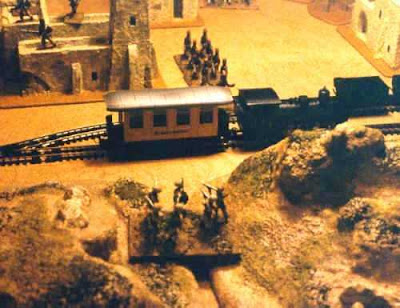

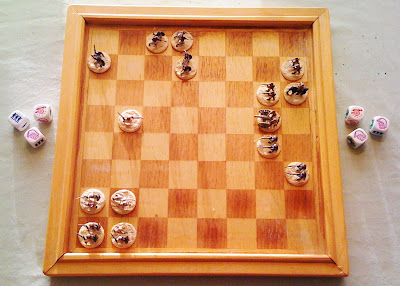

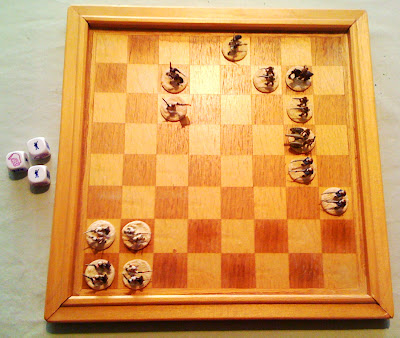


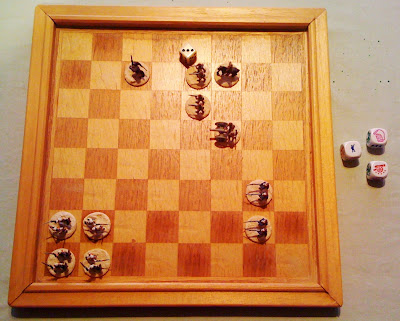
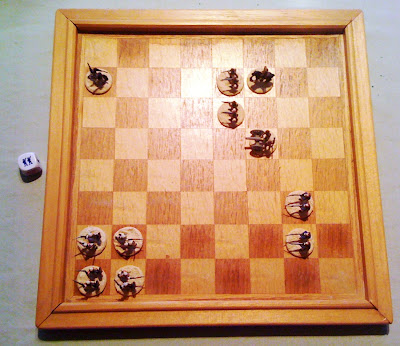

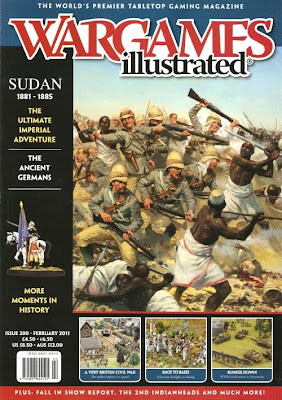


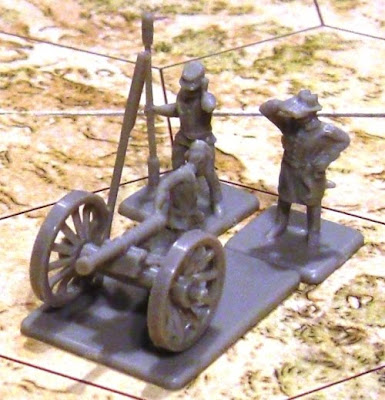










.jpg)

















.jpg)

.jpg)







